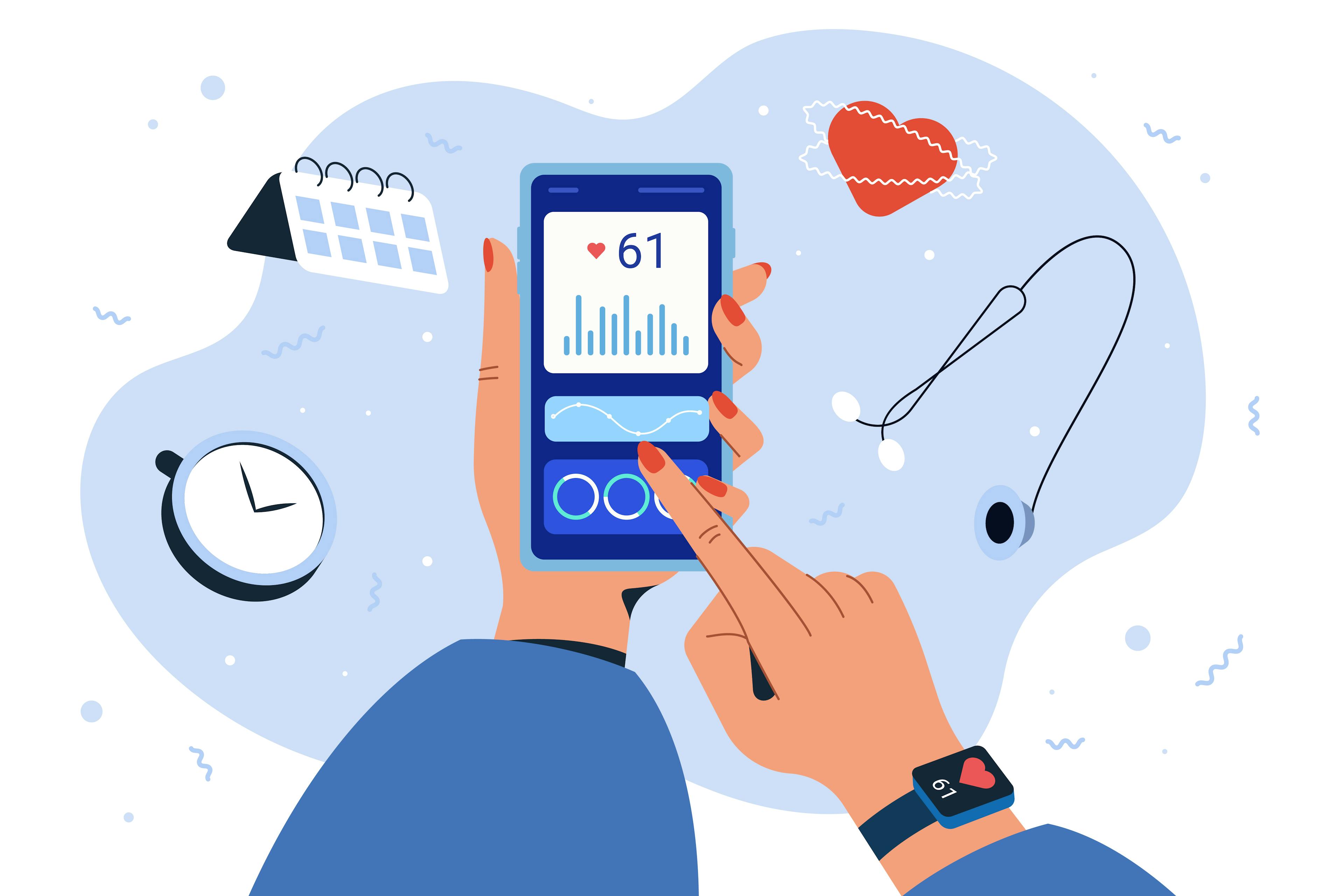Table of Contents
FHIR and Interoperability in the US Market
Author

Date

Book a call
This article summarizes the talk by Ruben Viera, Founder and CTO, Rock It, at the virtual healthcare meetup recently held at GeekyAnts.
Unlocking Healthcare Interoperability: Sharing the Patient's Story

In the world of healthcare, interoperability plays a crucial role, with the patient at its very heart. After all, each one of us is a patient at some point in our lives. This perspective makes the concept of interoperability much more humane and relatable. It's not just about standards or technology; it's about the patient and the profound impact of having access to the right data at the right time.
Interoperability, in essence, is about sharing a complete story – the patient's story. This story is vital for healthcare providers and professionals to deliver the best possible care. As healthcare practitioners, it is our collective responsibility to tell this story effectively.
The Evolution of Federal Interoperability Initiatives
In the United States, regulatory efforts have been a driving force behind achieving interoperability in healthcare. The journey began in 2019 with the Federal Interoperability Efforts, aimed at promoting and implementing interoperability. In 2018, the draft of the Trusted Exchange Framework and Common Agreement (TEFCA) emerged as a pivotal government initiative. Subsequently, in 2019, we embarked on the journey to work with various rules, with each passing year marking progress in interoperability.
A significant milestone arrived in 2021 when every ONC-certified Electronic Health Record (EHR) system in the US had to implement Fast Healthcare Interoperability Resources (FHIR). This mandate signified a significant leap in interoperability, setting the stage for what we have today.
Past Regulations and Their Impact
Today, the healthcare landscape is shaped by regulations like CMS Rule 9115-F. This rule emphasizes the necessity of enabling third-party developers to create applications securely accessing patients' health plan data using FHIR as the primary framework for data transmission. Personally, we've worked on implementing the Patient Access Final Rule for the past 3-4 years, a challenging yet gratifying endeavor that has improved data access.
This rule goes beyond clinical data, extending to financial information and other patient-relevant data. Finalized in May 2020, it marked a significant step forward in interoperability. However, some gaps remained to be addressed to further advance and promote interoperability.
One such gap was related to the transfer of data from one health plan to another, known as payer-to-payer data exchange. The initial rule raised questions among healthcare providers due to its lack of specificity. This led to the proposal of the CMS 0057 rule.
The CMS 0057 rule stipulates that data sharing between health plans must adhere to the same standards used for patient data access, including FHIR, USCDI, and other relevant guidelines. Notably, it mandates health plans to implement a provider access API. This means that not only patients but also healthcare providers can connect to healthcare data via third-party applications. This expanded access will significantly impact patient care by providing a more comprehensive view of the patient's history.
The Role of FHIR in Interoperability
At the core of these regulations lies FHIR, Fast Healthcare Interoperability Resources, as the central standard for interoperability. While there are other administrative processes in the healthcare system, FHIR is set to enhance many of them, including the pre-authorization process.
Pre-authorization is a critical step when seeking approval from health insurance providers for costly medical procedures. Traditionally, each payer had its unique process for pre-authorization. The new rule introduces interoperability into this process, ensuring that data related to pre-authorization can also be efficiently shared and processed using FHIR and other implementation guidelines.
Empowering Patients with Data Access
Two essential components of these regulations are the Patient Data Access API and the Provider Access API. These APIs empower patients and healthcare providers alike.
The Patient Data Access API allows patients to control and access their clinical and financial information securely through third-party applications. This puts patients in the driver's seat, enabling them to manage their health data according to their needs rather than relying on decisions made by others.
On the other hand, the Provider Access API ensures that healthcare providers have access to patient data when and where they need it most, improving the quality of care they can offer. With this API, a provider can access not only their own input but also the patient's complete medical history, leading to more informed decisions and better patient outcomes.
Payer-to-Payer API: Efficiency and Sustainability
From a financial standpoint, the introduction of payer-to-payer APIs aims to make the healthcare industry more efficient. These APIs enable health plans to understand the incoming patient population better, facilitating data analysis and informed decision-making.
Furthermore, these APIs have a preventive medicine aspect. By identifying and addressing health issues early, such as chronic kidney disease, the healthcare system can achieve significant cost savings. This illustrates another driver behind interoperability – improving patient outcomes while ensuring the sustainability of the healthcare system.
The rules also focus on streamlining the pre-authorization process, which has historically been manual and varied between different payers. The introduction of FHIR into this process aims to make it more efficient and consistent across the healthcare landscape. By doing so, patients can receive timely approvals for necessary medical procedures, leading to improved health outcomes.
Additionally, CMS requires health plans to report their performance in the electronic prior authorization process. This transparency allows patients to understand how long they may need to wait for authorization, ensuring that administrative delays don't impact their health negatively.
Recommended Implementation Guidelines and Proposed Standards
Implementing interoperability projects in the past used to be challenge-prone due to vague or missing implementation guidelines. However, the new rule addresses this issue by recommending specific implementation guidelines. These guidelines provide practical insights into using FHIR effectively in various aspects of healthcare, including patient access, provider access, provider directories, and payer-to-payer data exchange.
The Significance of FHIR
FHIR, or Fast Healthcare Interoperability Resources, has been in production since 2016-17 and gained widespread adoption in 2018. It stands for Fast because it facilitates easy development, primarily using JSON for data format and REST APIs for data transfer, along with OAuth 2.0 and OpenID for authorization management.
Fundamentally, FHIR comprises several essential concepts:
Resources: FHIR resources are akin to JSON or XML documents, serving as containers for structured data. They enable consistent data representation across different systems and organizations.
APIs: FHIR relies on RESTful APIs, which are familiar to developers, making it user-friendly and developer-friendly.
RESTful API: FHIR defines the use of RESTful principles for data exchange, simplifying data sharing across the healthcare ecosystem.
JSON and XML: FHIR supports JSON and XML as data formats, with JSON being the predominant choice for implementation.
Data: FHIR provides standardized data models for common clinical concepts, ensuring uniformity and compatibility across systems.
Advantages of FHIR
The advantages of FHIR are numerous:
Flexibility: FHIR allows for flexible application development and data modeling, adapting to specific use cases and needs.
Ease of Use: Developers find FHIR easy to work with, thanks to its reliance on widely-known technologies like JSON and REST.
Scalability: FHIR's scalability makes it suitable for a wide range of healthcare applications and use cases.
Standardization: HL7, responsible for FHIR, ensures its continued development and adherence to healthcare standards.
Your Role in the Interoperability Revolution
Interoperability isn't just about technology; it's about telling patient stories. As healthcare professionals, we must see beyond the mechanics of data transfer and focus on empowering patients to take control of their health. Interoperability is a transformative force, and its impact goes beyond healthcare systems – it's about improving lives and ensuring better patient outcomes.
As you navigate the ever-evolving landscape of healthcare, remember that interoperability is the key to a brighter, healthier future for all of us. So, let's continue to unlock the power of interoperability, one patient story at a time.
Check out the full meetup video here ⬇️
Dive deep into our research and insights. In our articles and blogs, we explore topics on design, how it relates to development, and impact of various trends to businesses.





